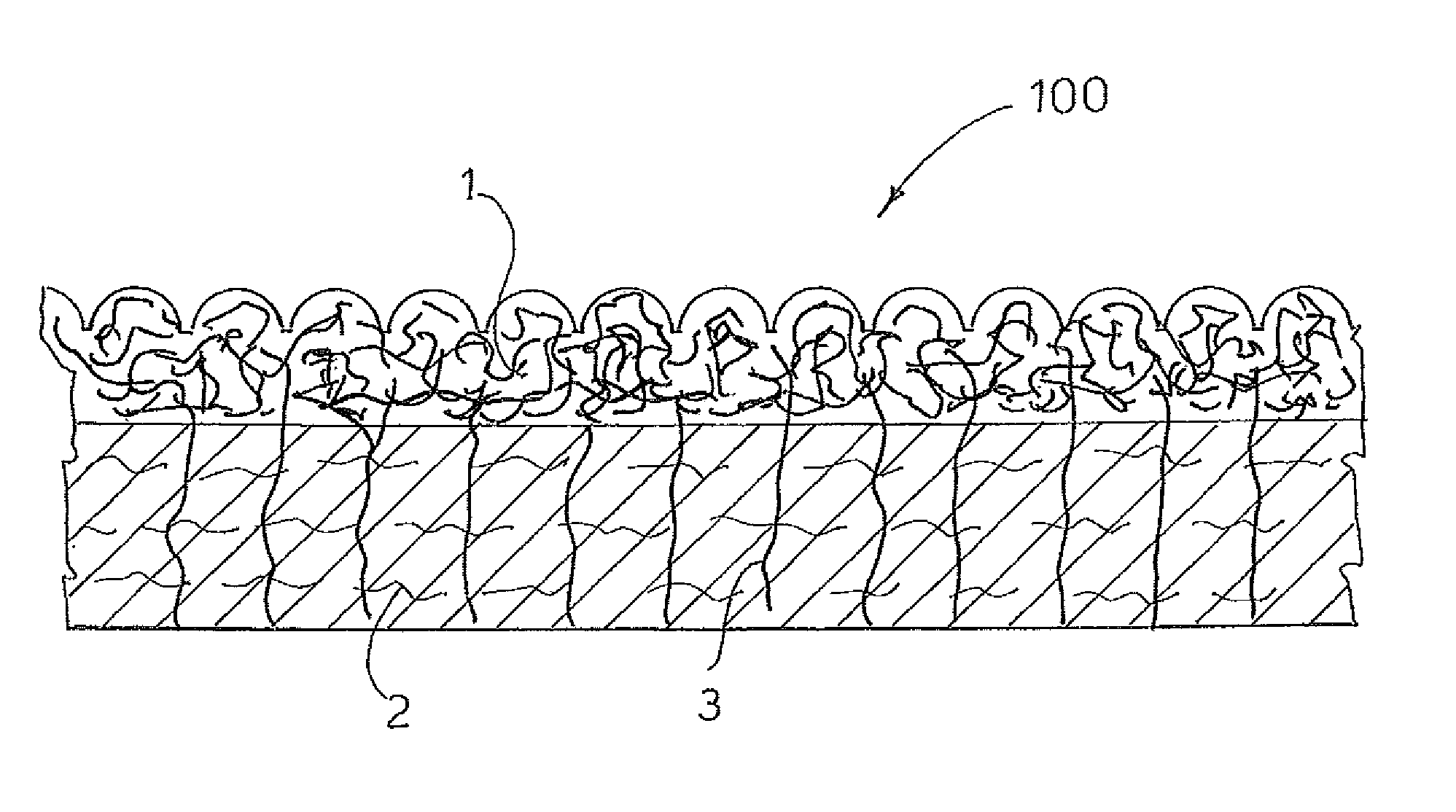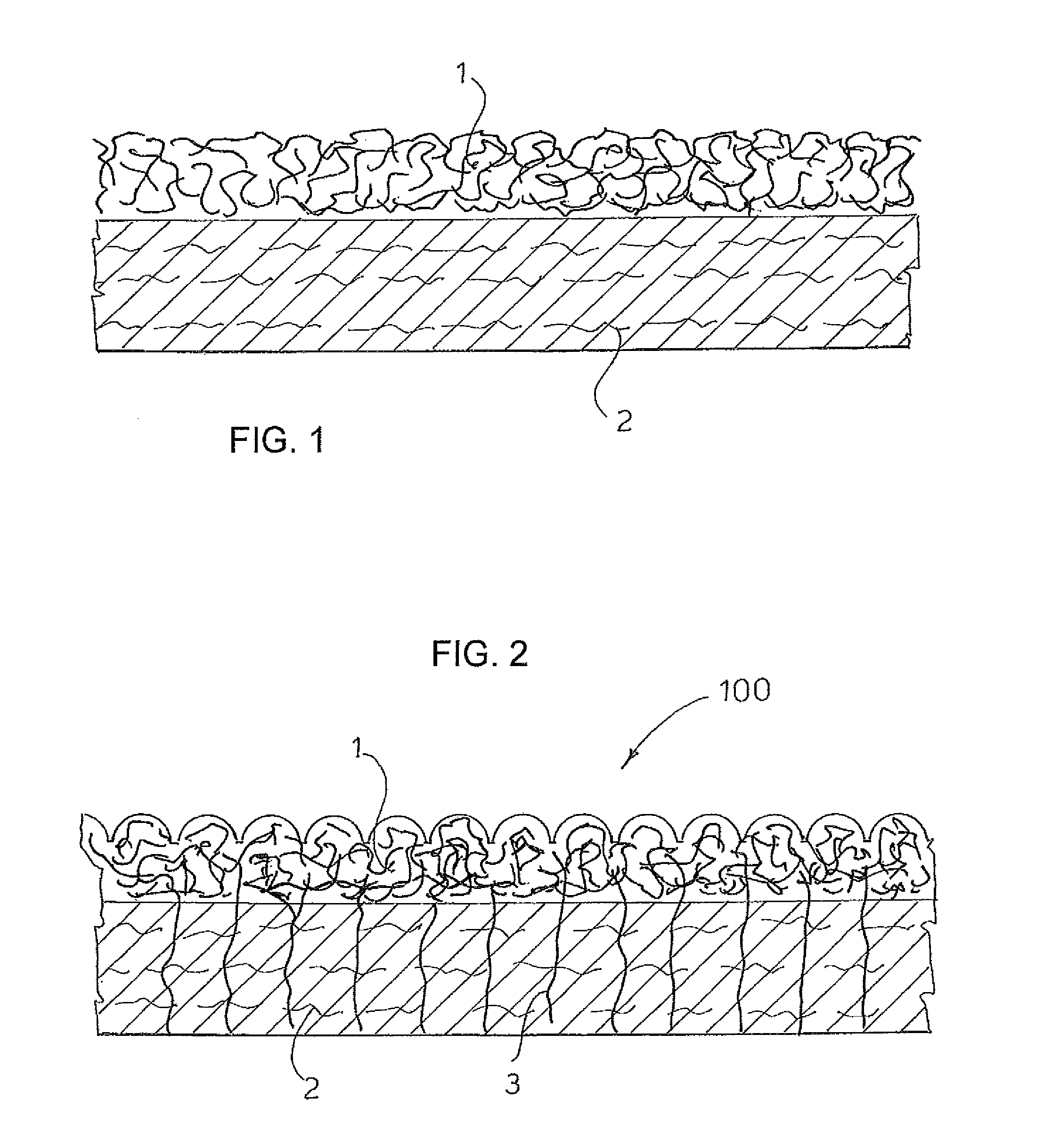Process for preparing a non-woven fabric having a surface covered with microfiber and fabric obtainable with said process
a technology of microfiber and non-woven fabrics, which is applied in the field of process for preparing a non-woven fabric having a surface covered with microfiber, can solve the problems of increasing the quantity of fibers used, increasing the cost of the product, and increasing the weight per square meter of the product, so as to achieve the effect of sufficient mechanical consistency of the material
- Summary
- Abstract
- Description
- Claims
- Application Information
AI Technical Summary
Benefits of technology
Problems solved by technology
Method used
Image
Examples
Embodiment Construction
[0019]The term “bonded material”100, illustrated in FIG. 2, is intended herein to identify a material composed of two superimposed layers 1 and 2 formed by different fibers that have been subjected to processing through which they have been mutually bonded. The mechanical needle-punching step (a) is carried out according to prior art.
[0020]The treatment with high pressure water jets used in step (b) of the present process is a technology known in the art also called spunlacing or hydroentangling. See for example U.S. Pat. No. 3,485,706, or the description of patent application EP 1359241 incorporated herein by reference.
[0021]The non-woven fabric 100 is prepared according to the following procedure: the fibres constituting the supporting layer 2, having deniers greater than 1 dtex (illustrated with a light line), are fed on a conveyor belt from a first carding system. The fibers of said supporting layer 2 are then bonded, for example with water jets or mechanical needle-punching, as...
PUM
| Property | Measurement | Unit |
|---|---|---|
| weight density | aaaaa | aaaaa |
| thickness | aaaaa | aaaaa |
| thickness | aaaaa | aaaaa |
Abstract
Description
Claims
Application Information
 Login to View More
Login to View More - R&D
- Intellectual Property
- Life Sciences
- Materials
- Tech Scout
- Unparalleled Data Quality
- Higher Quality Content
- 60% Fewer Hallucinations
Browse by: Latest US Patents, China's latest patents, Technical Efficacy Thesaurus, Application Domain, Technology Topic, Popular Technical Reports.
© 2025 PatSnap. All rights reserved.Legal|Privacy policy|Modern Slavery Act Transparency Statement|Sitemap|About US| Contact US: help@patsnap.com


